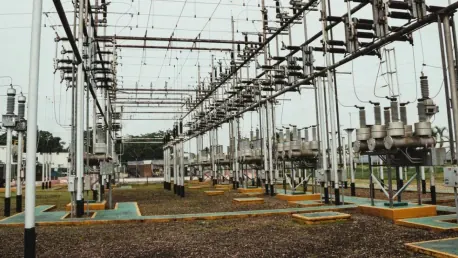Springfield Utility Plans for a Sustainable and Reliable Future
Gary Gibson, CEO of City Utilities (CU) in Springfield, outlines a comprehensive strategy aimed at ensuring that the power supply of the future remains sustainable, reliable, and affordable. Gibson addresses three major hurdles that CU faces: escalating electricity demand, increasingly frequent extreme weather events, and evolving environmental regulations.
Increasing Electricity Demand
With the integration of advanced technology into daily life—such as smartphones, electric vehicles, and smart home systems—Springfield’s demand for electricity is escalating. This surge is further amplified by the city’s expanding population. Accommodating this rising demand necessitates more than merely generating additional electricity; it requires meticulous planning and considerable investments to enhance capacity, particularly during peak periods.
Extreme Weather Events
Gibson highlights the impact of recent extreme weather events, citing examples like the winter storms Uri (2021), Elliott (2022), and Gerri (2024). These incidents tested the limits of the region’s power grid, occasionally resulting in rolling blackouts. To mitigate future disruptions, CU must significantly increase its power generation capacity. A new mandate from the Southwest Power Pool (SPP) requires CU to boost power generation capacity by 36% over typical peak winter usage by 2026—an increase from the current requirement of 15%. This substantial expansion aims to ensure a resilient power supply even under extreme conditions.
Environmental Regulations
In parallel, CU faces the challenge of adhering to stringent environmental regulations designed to curb pollution and safeguard the environment. Compliance demands substantial investments in new technologies and modifications in electricity generation methods, which are both costly and time-consuming but essential for a sustainable future.
Aging Infrastructure
Gibson notes that a vast portion of CU’s power generation infrastructure is aging, with some units dating back to the 1970s and 1980s. For instance, the combustion turbines at the James River facility were commissioned in 1989 and 1992, and units at the John Twitty Energy Center began operation in 1983. As these assets near the end of their operational lives, CU must plan for their replacement, entailing significant investments in new infrastructure. This is pivotal for maintaining a reliable power supply.
Strategic Initiatives and Taskforce
To address these challenges, CU has established a Power Supply Taskforce composed of experts across various fields, including engineering, construction, finance, and environmental regulation. The taskforce aims to devise innovative and feasible solutions for Springfield’s power needs. This includes investing in cutting-edge technologies, reinforcing existing infrastructure, and transitioning to cleaner energy sources. The combined expertise within CU is pivotal in meeting the escalating power demands while ensuring the continued provision of high-quality service.
Community Involvement and Transparency
Gibson emphasizes the importance of community support and transparent communication as CU embarks on this complex journey. The utility remains committed to keeping the Board of Public Utilities, the Citizens Advisory Council, and the wider community informed and engaged through the development and implementation of solutions.
Conclusion
Gary Gibson, the CEO of City Utilities (CU) in Springfield, has presented a detailed plan to secure the power supply’s sustainability, reliability, and affordability for the future. His strategy addresses three significant challenges the utility faces. First, there is the rising demand for electricity, which continues to grow as more people and businesses rely on electric power. Second, the increasing frequency of severe weather events poses a major threat to the stability of the power supply. These storms and natural disasters can lead to widespread outages and significant damage to infrastructure. Third, Gibson highlights the impact of evolving environmental regulations. These rules are becoming more stringent, requiring utilities to adopt greener technologies and reduce their carbon footprints. By tackling these challenges head-on, CU aims to ensure that it can provide dependable and cost-effective energy solutions to its customers. Gibson’s comprehensive strategy aims to create a resilient energy grid that meets present needs while anticipating future demands, ensuring that CU remains a leader in the energy sector.









